An Academic and Investor Deep Dive into Iranian EdTech Companies
The global education technology (EdTech) sector is characterized by rapid innovation, driven largely by the confluence of robust digital infrastructure and evolving pedagogical needs. Within this landscape, the emergence and rapid growth of Iranian EdTech companies present a compelling case study for global founders, investors, and curious readers, balancing significant technological advances—particularly in the realm of Education AI—with unique structural and infrastructural challenges.
This detailed analysis, grounded entirely in factual data and recent reports, examines the current state of Iran and education, tracing the historical adoption of e-learning, profiling key Iranian EdTech startups, outlining major market trends and technological innovations, and assessing the associated challenges and investment prospects.
1. Introduction: The Emerging Value Proposition
The Iranian EdTech market is experiencing substantial expansion, driven by demographic trends and a surging demand for accessible, high-quality remote learning. In 2024, the market size was estimated at USD 819.38 Million. Projections indicate robust growth, with the market expected to reach USD 2,228.76 Million by 2033, exhibiting a compound annual growth rate (CAGR) of 11.76% during the 2025–2033 forecast period.
This market momentum is fueled by several interconnected factors: an increased penetration of smartphones and the internet, a large youth population, and the necessity to address educational access gaps, particularly in underserved regions. Local Iranian EdTech startups and academic institutions are collectively enhancing the market share through the adoption of digital tools. This environment signals that Iran is committed to fostering technological literacy, a movement backed by both government initiatives and university collaborations.
2. The Current State of Education in Iran
The education sector in Iran, especially higher education, has been significantly influenced by technological developments, yet its structure remains complex and, in many areas, conventional.
2.1 E-Learning Adoption and Access
The phenomenon of e-learning in Iran’s higher education system is relatively new, having developed over less than two decades. While technological development has brought noticeable progress, particularly in providing graduated students with sophisticated technological knowledge an advantage in the job market, challenges persist.
The adoption rate, specifically in electronic education within higher education, remains comparatively low. According to 2018–2019 statistics, only 37,518 students (across Bachelor, Master, and Doctoral levels) were studying through electronic education, compared to a total student population of 3,616,114. This substantial gap indicates that, despite growing government encouragement and the provision of technical infrastructure, there is a lack of motivation and interest among applicants, suggesting a gap between supply and demand rooted in socio-cultural context.
2.2 Structural and Regulatory Environment
The governance of education in Iran faces unique structural obstacles. Responsibility for public education, higher education, and medical education is distributed across three separate ministries, a structural “multiplicity” that complicates policy-making and management.
Furthermore, virtual institutions, even those specializing in distance learning, are often constrained by centralized and uniform regulations, hindering innovation in their requirements, procedures, and academic content. Academic policies have historically been criticized for lacking sustainability, being too political, and deriving from formal ideology rather than independent scientific research or social needs.
2.3 Is Education Free in Iran and Challenges to Accessibility?
While e-learning ideally makes higher education more accessible, especially for marginal groups, this benefit has often not been realized in Iran due to high costs. This contrasts with the broader infrastructure challenges, where resources like computers and communication networks are sometimes expensive and not generally accessible to the public in developing countries like Iran.
Core challenges affecting the perceived quality and growth of digital education include:
- Infrastructural Gaps: Slow internet speeds, general dissatisfaction with quality of service, high costs, and insufficient investment and funding for higher education students. Weak IT infrastructure persists in the country generally and within universities specifically.
- Pedagogical Hurdles: Traditional thinking remains prevalent among university professors, and original research is often a low priority. Professors often lack up-to-date knowledge regarding technology and innovative education methods. The e-learning initiatives frequently fail due to a lack of personalization, collaboration, and a learner-centered approach.
- Policy and Management: There is an absence of a comprehensive educational policy specifically addressing e-learning in higher education. Weak or absent ICT knowledge among policy-makers and managers, coupled with conservative attitudes, inhibits progress.
3. History of EdTech and E-Learning Evolution
The concept of e-learning is rooted in the long history of distance learning. Traditional methods evolved from print-based and correspondent learning prevalent in Europe until the mid-twentieth century, to educational television and radio. However, early radio and television-based learning suffered from “unilateralism” and lacked mutual communication between student and teacher.
The fundamental shift occurred over the recent past decades with the development of the Internet and the Web. This brought about web-based learning, characterized by intelligence and conscious learning through databases. E-learning, in its simplest definition, denotes the use of electronic devices in education. Specifically, online learning—defined as the use of internet technologies to deliver solutions that enhance knowledge and performance—marked the biggest revolution in contemporary education, removing limitations like high costs and mandatory classroom attendance.
In Iran, higher education institutions started adopting these technologies significantly in the early 2000s:
- Ferdowsi University of Mashhad: Proposed virtual classes in 2001.
- University of Tehran: Established the E-learning Center in 2002, reforming and expanding it in 2006 to accept students into online degree programs. By 2019, the university offered 100 online Master’s courses and three Bachelor’s degree majors.
Despite these early institutional efforts, the structure and functioning of many institutions employing information technology remain fundamentally conventional.
4. Iranian EdTech Startups List and Trends
The current wave of Iranian EdTech companies comprises local startups focused on bridging skill gaps and providing high-quality, targeted content across various educational sectors, including K-12, higher education, individual learning, and enterprise training.
4.1 Key Market Trends: Focus on Education AI
A defining trend in the Iranian EdTech market is the rising role of AI and personalized learning tools. EdTech innovators are integrating artificial intelligence and adaptive learning technologies to provide learning experiences tailored to individual student performance, engagement habits, and preferences. These intelligent platforms deliver instant feedback, personalized content suggestions, and customized tests, significantly improving outcomes for both students and teachers.
This technological emphasis aligns with Iran’s broader interest in technology-driven development. Specific developments in this area include:
- Spatial AI Center: In April 2024, EON Reality launched Iran’s first Spatial AI Center, offering 10,000 customized Extended Reality (XR) courses leveraging Augmented Reality (AR) and Virtual Reality (VR) to modernize workforce skills in areas like renewable energy and robotics.
- National AI Initiative: In May 2025, Iran launched a nationwide AI education initiative aimed at providing free, engaging AI training for one million schoolchildren aged 7 to 15, supported by training 100,000 teachers and parents.
- International Cooperation: Iran proposed the creation of an international center for digital education at the World Conference on Digital Education in May 2025, aiming to foster cooperation and develop a unified quality assessment system, emphasizing the country’s discussion of AI-related achievements and challenges.
4.2 Best Iranian EdTech Startups (A Detailed List)
The following table and subsequent analysis highlight several prominent Iranian EdTech startups based on available source information, demonstrating their focus, founding year, and innovation, particularly regarding AI integration:
| Startup Name (Farsi Name) | Founding Year | Product Focus | Audience Segment | Key Innovations (Especially AI) |
| Maktabkhooneh (مکتبخونه) | 2011 | MOOCs, Skill-based training, University courses (Sharif, Tehran). Organizational learning (Maktab Business). | Individual Learners, Institutes, Enterprises | AI Agent Construction (using n8n), integrating LLMs and APIs for automation. Courses on Visual Language Models (VLM). |
| FaraDars (فرادرس) | N/A (Large presence) | Massive repository (16,000+ titles) of academic, engineering, programming (Python, AI), and professional video tutorials. | Individual Learners, Students, Professionals | Wide coverage in specialized technical fields like AI and Data Mining. Focus on certified skill acquisition. |
| Finca (فینکا) | N/A | Mobile-based programming education (Python, C++, Web, Hacking/Security). Gamified learning concepts. | Individual Learners (primarily technical skill acquisition) | Courses on Creative Thinking with AI, Introduction to AI, and detailed understanding of How Chatbots Work (LLMs). Uses user goal assessment for personalized paths. |
| LanGeek (لنگیک) | N/A | English language learning (vocabulary, grammar, pronunciation). | Individual Learners | SyntaxSense (intelligent language teacher). Digital version of the Leitner system for vocabulary (Daily Words). Personalized word lists. |
| Learnova Online Academy | 2023 | English language mastery, transforming traditional methods using modern global techniques. | Individual Learners | Focus on updating methods to international standards, addressing deficiencies of traditional high-cost/low-progress approaches. |
| Mofid (Implicit) | N/A | Financial and capital market education (TSETMC analysis, technical/fundamental analysis, portfolio management). | Individual Learners, Enterprises (Financial sector) | Focus on online video courses and webinars in high-demand economic skills. |
In-Depth Analysis of Key Players:
Maktabkhooneh (Founded 2011) stands out as Iran’s first and largest online education platform, specializing in Massive Online Open Courses (MOOCs). It differentiates itself by providing free access to video recordings of courses from Iran’s top universities, such as Sharif University of Technology and the University of Tehran. Critically, Maktabkhooneh is an early adopter of advanced Education AI concepts, offering courses on building intelligent agents and utilizing complex Visual Language Models (VLM). Its corporate arm, Maktab Business, focuses on strengthening learning culture within organizations and managing employee progress using data-driven methods.
FaraDars boasts massive scale, featuring over 4.5 million students and 16,000 educational titles across 290 specialized fields, covering core technical disciplines including programming, engineering, data mining, and Artificial Intelligence. The platform emphasizes standardized, certified learning outcomes.
Finca is explicitly focused on making programming accessible and engaging via mobile devices. With over 500,000 installs, it demonstrates success in high-volume, skill-based training. Its comprehensive coverage includes high-demand areas like Python, C++, and web development. Finca’s curriculum incorporates AI fundamentals, teaching users how large language models (LLMs) and chatbots function, and promoting creative thinking using AI tools.
Language learning is another vibrant segment. LanGeek uses a smart, accessible AI tutor called SyntaxSense and digital tools based on memory systems (like the Leitner system for vocabulary) to expedite the learning process. Learnova Online Academy (Founded 2023) aims to overhaul English instruction in Iran by adopting contemporary global methodologies, moving away from high-cost, low-efficacy traditional approaches.
5. Challenges and Investment Opportunities
While the market growth forecast is promising, founders and investors must navigate significant structural and operational challenges that define the Iranian EdTech landscape.
5.1 Systemic and Infrastructural Challenges
The journey towards fully effective e-learning is hampered by deeply rooted issues:
- Policy and Governance: The lack of a unified, comprehensive educational policy for e-learning creates regulatory ambiguity. Furthermore, policy decisions are often politically driven and centralized, restricting the necessary autonomy and innovation within virtual higher education institutions.
- Infrastructure and Cost: Despite technological advancements, inadequate infrastructure (slow internet speeds, low quality of service) remains a primary barrier. The high cost associated with accessing technology and e-learning courses prevents marginalized groups from benefiting fully, contradicting the goal of increased accessibility.
- Human Capital Gap: There is a shortage of skilled manpower and professors knowledgeable in IT. Many educators still operate within a framework of traditional thinking and lack adequate specialization regarding technology and innovative teaching methods, leading to poor quality student experiences in virtual settings.
5.2 Investment Opportunities and Growth Areas
The Iranian EdTech companies market, despite its friction points, offers high-potential areas for investment aligned with the forecasted 11.76% CAGR:
- AI and Personalized Learning: The strong trend toward integrating AI for adaptive learning, personalized content delivery, and instant feedback represents a major investment area. Startups focusing on next-generation pedagogical tools, such as Spatial AI/XR applications, stand to capture significant market share by meeting the need for effective solutions to manage large student populations.
- Corporate and Professional Upskilling: Platforms like Maktabkhooneh’s Maktab Business, targeting enterprises, demonstrate the demand for specialized, continuous, and data-driven professional development. Given the recognized shortage of skilled manpower, investment in specialized training for technical fields (e.g., programming, cybersecurity, and finance, as offered by FaraDars, Finca, and Mofid) is crucial for addressing skill gaps.
- Infrastructure Solutions: Investment in optimizing delivery mechanisms and addressing infrastructural weaknesses (slow speed, high cost) could significantly enhance scalability and reach, particularly for cloud-based deployment models.
- Language Acquisition: Given the evident market interest in platforms like LanGeek and Learnova Online Academy, tools that effectively utilize technology to revolutionize English language instruction and bridge the gap between traditional methods and modern global standards represent viable targets.
6. Global Comparison and Context
Does Iran have good education outcomes in a global context? Iran has been affected by the global evolution of distance learning, transitioning from traditional methods to web-based and eventually online learning. However, as a developing country, Iran faces challenges common across similar economies, where the impact of information technology is not uniform due to varying characteristics and infrastructure. Ignoring the benefits of modern technologies leads to deprivation and retardation.
Globally, the use of ICT is vital for civil society and governance, enabling transparency, accountability, and empowerment. Iran’s policy makers are showing an increased appreciation for digital education, reflected in the launch of the national AI education program and the proposal for an international digital education center. The goal is to localize technology—adapting its quality and benefits to specific cultural and social situations—to maximize benefits within the country.
However, Iran’s governance challenges, such as centralization and the political derivation of education policies, contrast sharply with the principles of good governance, which require participation, transparency, and responsiveness, all of which ICT is capable of facilitating. The success of Iranian EdTech companies in achieving global benchmarks will depend heavily on the evolution of this supportive governance framework.
7. Conclusion
The Iranian EdTech market is poised for significant expansion, evidenced by a predicted CAGR of 11.76%. This growth is being successfully driven by innovative Iranian EdTech startups such as Maktabkhooneh, FaraDars, and Finca, which are increasingly pioneering localized applications of Education AI—from LLM integration and personalized learning to immersive Spatial AI.
Despite this promising trajectory, the industry faces substantial hurdles, including underdeveloped general IT infrastructure, high costs, and systemic governance challenges characterized by policy multiplicity and centralization. For global founders and investors, the high volume of individual learners, the robust technical talent pool producing complex AI tools, and the governmental backing for technological literacy present clear opportunities, provided they can strategically address or mitigate the inherent infrastructural and regulatory complexities. The future of Iranian EdTech companies lies in transforming these challenges into levers for innovation, ensuring that digital education achieves its promise of widespread accessibility and high quality for all Iranians.
8. FAQ Section
- What is the current market size and growth forecast for Iranian EdTech companies? The Iranian EdTech market size reached USD 819.38 Million in 2024 and is projected to grow to USD 2,228.76 Million by 2033, exhibiting a strong CAGR of 11.76% during the 2025–2033 period.
- Are Iranian EdTech startups focused on Education AI? Yes, the rising role of Education AI and personalized learning tools is a key trend. Iranian EdTech startups are integrating AI for adaptive learning, customized tests, and instant feedback. Companies like Maktabkhooneh offer courses on sophisticated topics like AI Agent construction and Visual Language Models (VLM), while Finca teaches the principles of Large Language Models (LLMs). Furthermore, Iran launched a national AI education initiative targeting schoolchildren in 2025.
- Does Iran have good education infrastructure to support EdTech? While Iran has experienced noticeable progress in education regarding technological development, the IT infrastructure generally and specifically within universities is weak. Challenges include inadequate student access to the internet, slow speeds, high service costs, and conservative attitudes among policymakers.
- What are some of the most prominent Iranian EdTech startups list entries? Key Iranian EdTech startups mentioned in the sources include Maktabkhooneh (MOOCs, university partnerships, AI/VLM focus), FaraDars (massive library of academic and technical tutorials), Finca (mobile-based programming and AI education), LanGeek (intelligent English language learning), and Learnova Online Academy (modern English methods).
- Is education free in Iran, specifically relating to E-learning? While E-learning aims to increase accessibility, high costs mean that the goal of making higher education more accessible to marginal groups has not been fully realized in Iran.
- What is the biggest challenge facing Iranian EdTech companies? The most significant challenges include the lack of a comprehensive educational policy for E-learning, weak IT infrastructure, insufficient funding, and prevailing traditional thinking among academics and policy-makers.

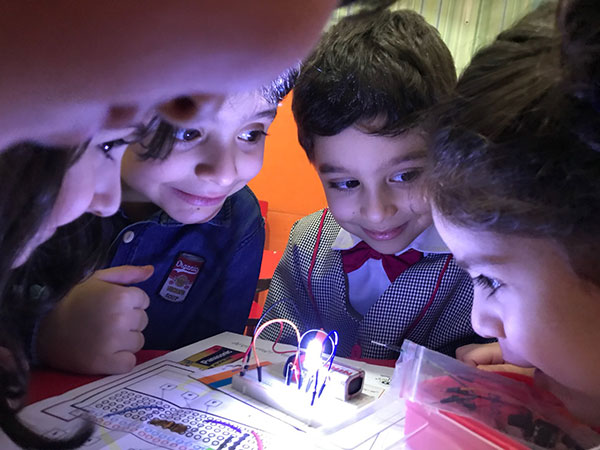

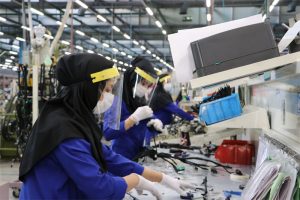



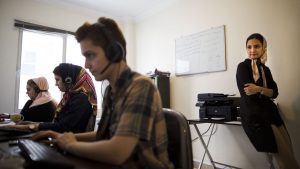
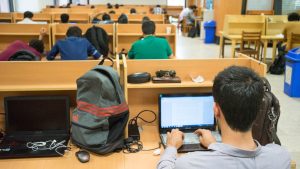
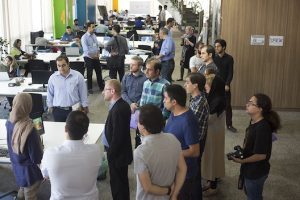



Post Comment